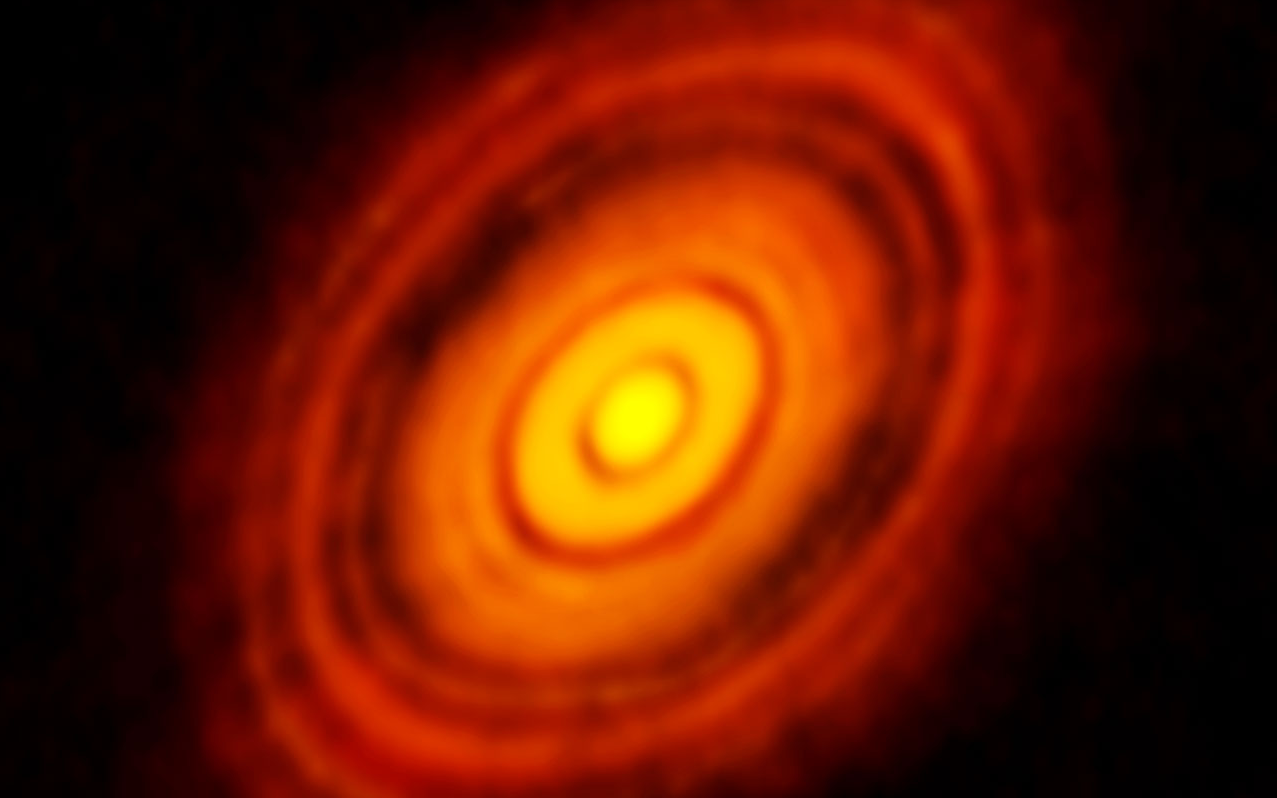Researcher from VUAS reveals conditions that influenced the beginning of planet formation
The planets of the Solar System formed from fine interstellar dust particles. As the interstellar cloud (which would later become the Solar System) condensed, the dust particles gradually sticked together. As this process continued in the disk around the proto-Sun, they grew to the size of sand grains, peas, beans, pebbles, etc., until the “dust” the size of flying mountains continued growing by attracting material with their own gravity.

Dust in the planet-forming disk of the protostar HL Tauri. ALMA (ESO/NAOJ/NRAO).
Frosting – the freezing of volatile substances into an icy layer on the surface of the dust grains – played a major role in dust clumping. The substances that form frost are well known to us here on Earth: water, methane (natural gas), carbon monoxide, carbon dioxide, methanol (wood spirit), and ammonia. Frosted dust grains were stickier and clumped together more easily in collisions. Dust aggregation was the first step in planet formation that occurred in the disk around the proto-Sun. Even though each dust particle is minuscule – less than a thousandth of a millimeter – their number in the proto-Solar nebula was at least several quattuordecillion (10⁴⁵), and the total mass was about 10 Jupiters. Therefore, anything that happened to the dust had significance for the planet formation process.
“Even though each dust particle is minuscule – less than a thousandth of a millimeter – their number in the proto-Solar nebula was at least several quattuordecillion (10⁴⁵), and the total mass was about 10 Jupiters.”
In a recent theoretical study, leading researcher Juris Kalvāns from the Ventspils International Radio Astronomy Center discovered that not all dust grains were frosted. More precisely, the frost that they received equally in the interstellar medium was redistributed near the proto-Sun only onto the coldest dust grains. This relocation of ice molecules was driven by differences in the size and chemical composition of dust, causing radiation from the proto-Sun to heat them to different temperatures. Frost evaporated from some particles only to quickly refreeze onto those that remained cold enough. During intense radiation bursts from the proto-Sun, frost evaporated from all particles. These periods lasted from a few years to several centuries. As soon as such a period ended, the dust cooled again, and again frost reformed only on the coldest dust grains, leaving the rest bare.
This is the essence of the discovery. Ice in the disk concentrated only on 10%, or perhaps just 1% of the coldest dust grains. These grew excessively large and, as micrometer-sized “giants”, floated among the tiny, warmer dust grains. The latter could easily stick to the thick frost of the larger icy grains. In this way, dust growth occurs faster than by the sticking of similarly sized particles. Thus, the “settling of accounts” between tiny molecules and dust particles in the proto-Solar nebula and disk could have had large-scale effects – a rapid beginning to planet formation. Determining whether and how this occurred is now the task of future theoretical simulations and experiments.
Link to the study published in the journal Astronomy & Astrophysics:
https://www.aanda.org/articles/aa/full_html/2025/02/aa52526-24/aa52526-24.html
The study was conducted under the project “Desorption of Ice Molecules in the Interstellar Medium (DIMD),” No. lzp-2021/1-0076, funded by the Latvian Science Council.
Link to the project: https://en.venta.lv/zinatne/projekti/desorption-of-ice-molecules-in-the-interstellar-medium
Share on other platforms
Other news







